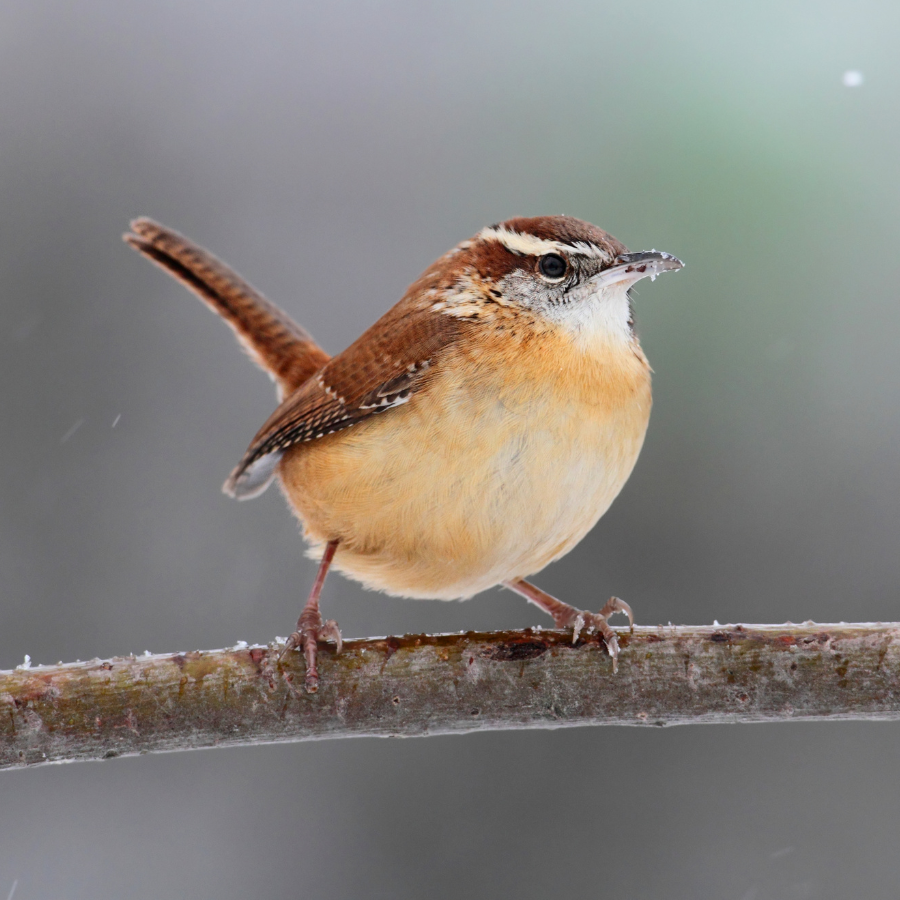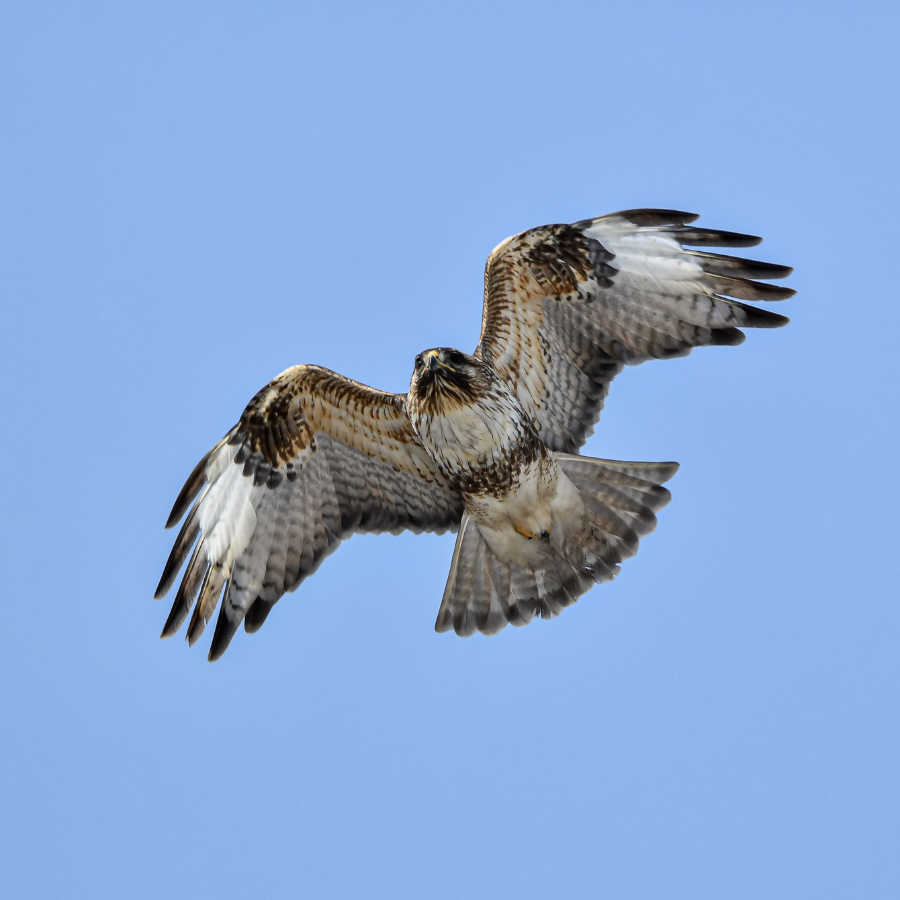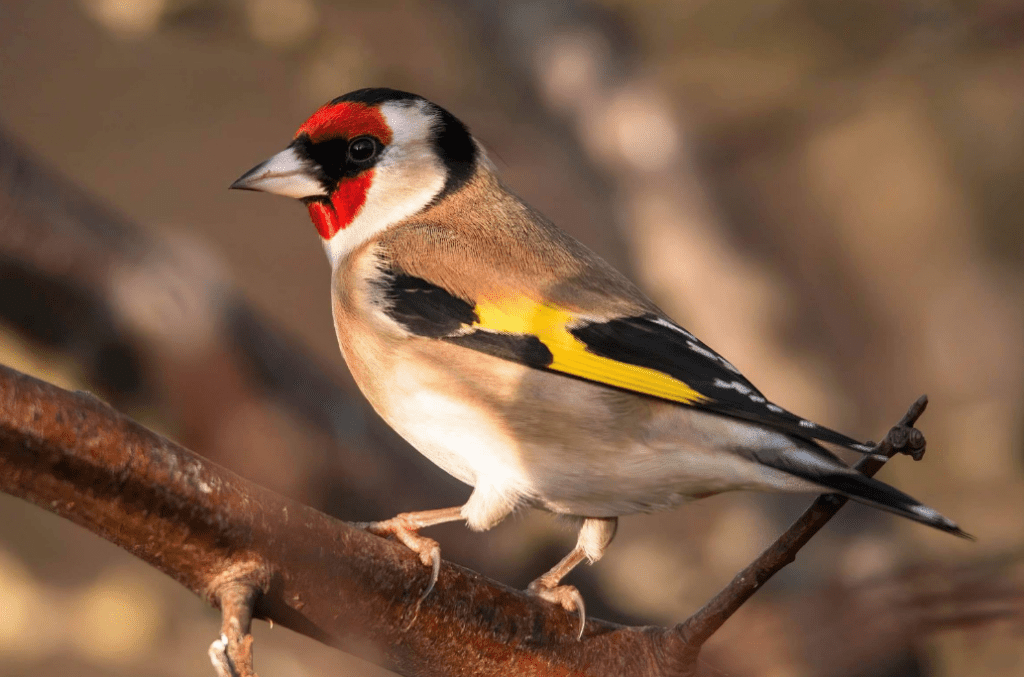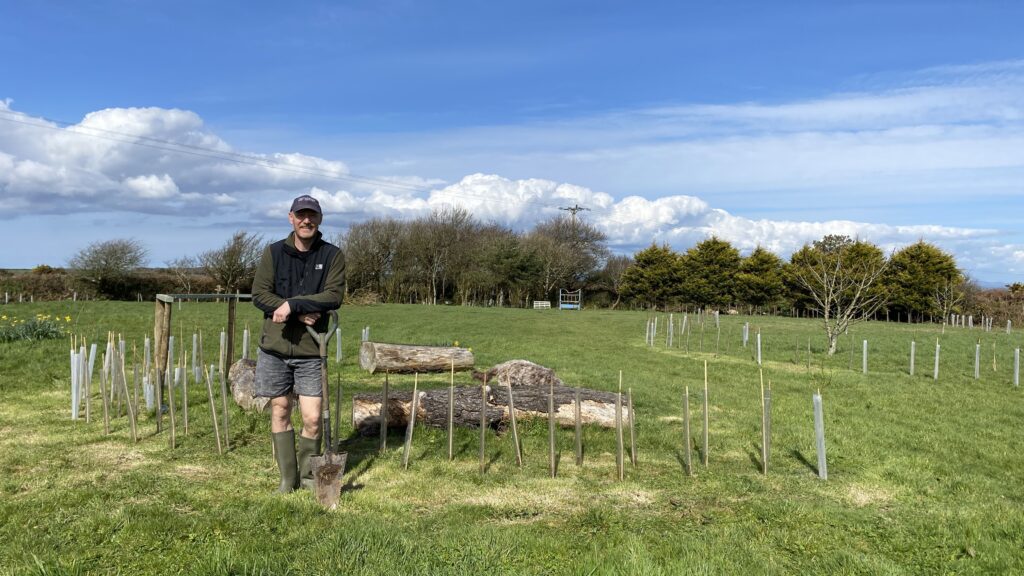Nature abounds at Trewena, and during your visit you’ll have plenty of opportunity to get up close and personal with some of the wildlife that calls this place home. In particular we’re blessed to have such an abundance of birds that visit throughout the year or call Trewena and the surrounding areas home. In this article we identify some of the most common bird species that visitors are likely to see in this part of Cornwall.
You might notice that we don’t have bird feeders or tables on site. That is by design. Rather than creating honeypot areas where the birds come to rely on us for food, we’re attempting to create an environment where there’s a natural bounty for birds all year round. More about our creation of habitats can be read here. The woodlands, thickets and hedgerows around the site offer bags of food in the way of insects and berries for birds to feed on. We’d also argue that it’s more rewarding to see these wonderful guests in their natural habitats… You just may have to be a bit more patient!
A few top tips for spotting birds in and around Trewena:
- Use binoculars: Binoculars are essential for birdwatching and in your cottage you’ll find a pair to use during your stay. You’re welcome to take them out with you if you’re exploring the area but please leave them after your stay! The binoculars will help you see birds up close and make it easier to identify different species.
- Be patient and observant: Stay still, keep your eyes and ears open, and be patient.
- Choose the right time of day: Birds are most active in the early morning and late afternoon. Plan your birdwatching around these times to increase your chances of spotting different species.
- Dress appropriately: If you’re outside wear muted colours that blend in with the surroundings, and avoid wearing bright or flashy clothing that may scare away birds. Of course you can always watch from the comfort of your cottage with a nice hot drink in hand. Our cottages all have great vantage points over the gardens and natural spaces.
So without further ado, here’s a run down of the most common birds visiting our Cornish Holiday cottages. How many will you spot during your stay? We’d love to know if you see any that are not on the list below…

Robin
Robins are one of the UK’s most beloved birds, and are known for their friendly nature and bold personalities. They’re a constant and welcome companion to life at Trewena, offering fun company whenever we’re working outside. Their distinctive red breast, which is actually used to attract mates and defend their territory. They are often seen perched on branches, singing their melodious song, or hopping around gardens and lawns in search of insects and worms.

Blackbird
Blackbirds are a welcome and frequent visitor to the gardens at Trewena. They have sleek black plumage and bright yellow eye-ring. Male blackbirds have a distinctive orange bill, while females have a brownish bill. They are often seen hopping around the gardens and lawns, searching for insects, berries, and earthworms to eat. Blackbirds have a beautiful singing voice, and can be heard singing throughout the year.

Blue Tit
Blue tits are one of our most fun and colourful birds, and are easily spotted flying in and out of bushed around the gardens with their bright blue crown, yellow breast, and green wings. They are small and agile, and are known for their acrobatic abilities – they can often be seen hanging upside down from branches. Blue tits feed on insects, seeds, and nuts.

Wood Pigeon
Often seen perching on the telegraph wires running along the road outside of Trewena, or hiding in the thicket next to the garden, wood pigeons are large and plump birds, with a distinctive white neck patch and a low, cooing call.

House Sparrow
House sparrows are small, brown and grey birds, with a stout beak and a distinctive black bib. They are a common sight when the farms around Trewena are harvesting and planting presumably because this gives them a bumped opportunity to feed on seeds and insects.. House sparrows are gregarious birds, and often congregate in large flocks. They are a familiar and much-loved sight in many British gardens and a firm favourite at Trewena!

Great Tit
The Great Tit is a common garden bird in the UK, with a distinctive black head and white cheeks. They have a yellow-green body and wings, with a bold black stripe down their belly. Great Tits are a vocal bird, with a range of calls and songs. They feed on insects, seeds, and nuts, and can often be seen at bird feeders.

Pied Wagtail
The Pied Wagtail is a small, black and white bird with a long tail. They have a distinctive white face and black bib, and are often seen walking or running on the ground, wagging their tail up and down. Pied Wagtails feed on insects and are often seen bouncing around the parking area and front lawn.

Wren
These little chaps are quite elusive but we see them a lot in our garden where they like to rummage around the ground under the shrubs. The Wren is a tiny bird, with a round body, short tail, and curved beak. They have a brown and buff plumage, with a distinctive pale eyebrow stripe. They feed on insects and spiders, and are known for their loud and melodious song.

Song Thrush
The Song Thrush is a medium-sized bird, with a brown and speckled plumage, and a distinctive pale throat with dark spots. They are a common garden bird, and can be seen hopping on the ground in search of earthworms and snails to eat. We often hear these chaps before we see them and they have a beautiful singing voice.

Buzzard
We’re very lucky to have a resident Buzzard that roosts in the woods at the back of Trewena. You’ll often see it take to the air from the ground or hedges around the firepit if you walk into the back field. The Buzzard is a large bird of prey, with a broad, rounded wingspan and a distinctive mottled brown plumage. They can often be seen soaring over fields and woodlands, searching for small mammals, birds, and carrion to eat. Buzzards have a loud, mewing call, and are a common sight all around the farmland of Mabe.

Barn Owl
With voles and field mice abounding in the surrounding fields, we’ve been lucky enough on occasion to spot Barn Owls hunting near the edge of hedgerows around Trewena , particularly at dawn. What a treat! The Barn Owl is a beautiful and iconic bird, with a distinctive heart-shaped face and pale, speckled plumage.

Goldfinch
The Goldfinch is a small, brightly coloured bird, with a red face, yellow wing patch, and black and white wings. They are a common garden bird, and can often be seen darting in and out of the hedgerows. Goldfinches have a beautiful singing voice, and their songs often include trills and warbles.

Bullfinch
These lovely small, plump birds are easily spotted with their distinctive bright pink breast and black and white wings. They are a shy bird, and are often difficult to spot in gardens and woodlands, but are common at Trewena so fingers crossed and you’ll spot them in the hedgerows if you watch carefully from the comfort of your cottage. Bullfinches feed on buds, seeds, and berries, and have a sweet, piping call.

Magpie
Plagued by infamy, the Magpie is a large black and white bird, with a long tail and distinctive green and purple iridescent feathers. They are a common sight in gardens and woodlands, and are known for their raucous chattering calls. Magpies are omnivorous, and feed on insects, small mammals, and carrion. They get a bad press and are unpopular due to the fact they raid nests, but they really are quite a beautiful and interesting bird.

Crow
The Crow is a large, black bird, with a distinctive heavy bill and broad wings. They are a common sight in the fields and gardens and woodlands around Trewena and are known for their loud, cawing calls. Crows feed on a variety of food, including insects, small mammals, and carrion, and are often considered a nuisance by farmers and gardeners due to their habit of eating crops and digging up gardens. We kinda like them though. More often than not solitary figures they’re inquisitive birds and enjoy watching us working outside.
Interested in how we’re trying to work with nature and improve wildlife habitats at our award winning cottages? Come stay with us and find out more. You can choose from ‘Little Avalon’ our 1850s labourers cottage, or ‘The Pigsty’ our converted barn.



